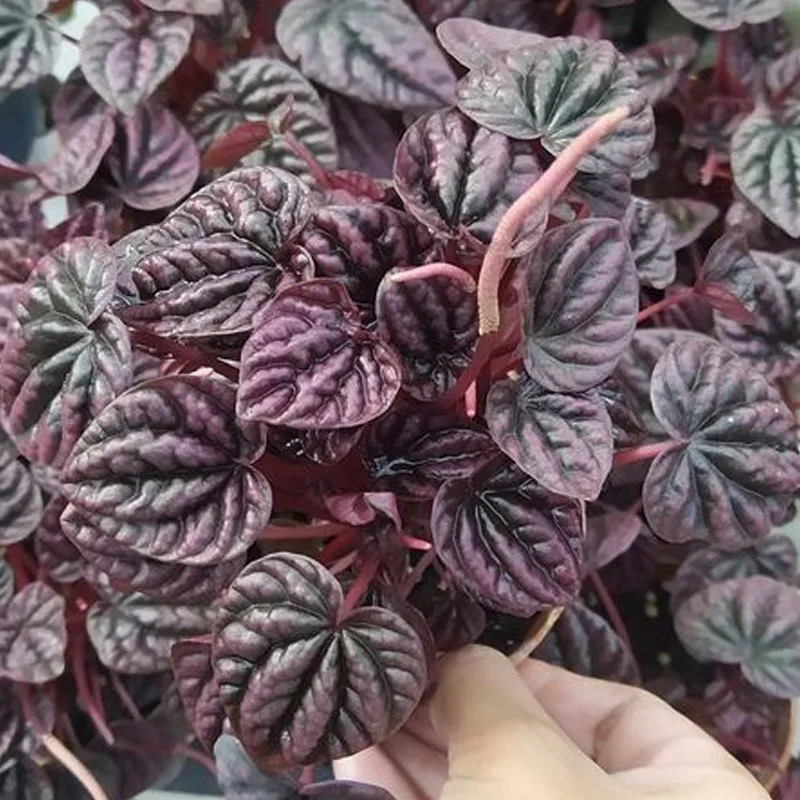
What is Senecio Crassissimus?
There’s a certain magic to succulents. Their plump, otherworldly forms and resilience in dry conditions have captivated plant enthusiasts for decades. Among this fascinating group, the Senecio crassissimus holds a special place in my heart. With its architectural form and captivating foliage, it’s a conversation starter in any room.
My fascination with the Vertical Leaf, as it’s commonly called, began at a local nursery. Nestled amongst a sea of aloes and jade plants, its unique, stacked leaves stood out. They were a silvery-grey, edged with a vibrant purple, and fanned out in a mesmerizing, vertical spiral. It looked like a living sculpture, unlike anything I’d seen before.
1501 Species in Genus Senecio
How to care for Senecio Crassissimus?
Taking this beauty home, I embarked on a journey to understand its needs. Research revealed it to be a native of Madagascar, a land known for its hot, dry climate. This explained the succulent nature of its leaves – they store water to survive periods of drought.
Here’s what I learned about caring for my Senecio crassissimus:
- Light: It thrives in bright, indirect sunlight. A south-facing window with sheer curtains provides the perfect balance. Avoid harsh afternoon sun, which can scorch the leaves.
- Water: This is where underwatering is your friend. Overwatering is the leading cause of death for succulents. Allow the soil to dry completely between waterings. During the winter, water even less frequently.
- Soil: A well-draining succulent or cactus mix is essential. Ensure the pot has drainage holes to prevent waterlogging.
- Temperature: Senecio crassissimus prefers warm temperatures, ideally between 65°F and 80°F (18°C and 27°C). Protect it from frost and drafts.
How to propagate Senecio Crassissimus?
Witnessing my plant thrive, I felt the urge to share its magic. Thankfully, Senecio crassissimus is relatively easy to propagate. Here are the two methods I’ve found most successful:
- Leaf Cuttings: Select a healthy, mature leaf. Allow it to callus over for a day or two by laying it on a dry surface. Then, plant the base of the leaf in a well-draining succulent mix, keeping the soil slightly moist. Be patient; it can take weeks for roots to develop.
- Stem Cuttings: Take a healthy stem tip with a few leaves. Allow it to callus over as with the leaf cutting. Plant the stem in a well-draining succulent mix, keeping the soil slightly moist. New growth should appear from the nodes within a few weeks.
Beyond the Basics: Mastering the Craft
With some experience under my belt, I started to delve deeper. Here are some additional tips for cultivating a truly magnificent Senecio crassissimus:
- Fertilization: While not essential, a light feeding with a balanced fertilizer diluted to half strength during the spring and summer growing season can give your plant a boost.
- Repotting: As your Senecio crassissimus matures, it may become rootbound. Repot it every 2-3 years into a slightly larger pot with fresh succulent mix.
- Pests and Diseases: These are uncommon with proper care. However, keep an eye out for mealybugs, which can be treated with neem oil. Fungal diseases can occur with overwatering; ensure good air circulation around the plant.
A Plant for All Seasons
The Senecio crassissimus has become a cherished companion in my home. Its architectural form adds a touch of modern elegance to any space, and its low-maintenance nature makes it ideal for busy lifestyles. Whether you’re a seasoned plant parent or a curious beginner, the Vertical Leaf is sure to add a touch of wonder to your life. So, why not embark on your own Senecio crassissimus adventure? You might just be surprised by the joy this unique succulent can bring.
If i die, water my plants!



